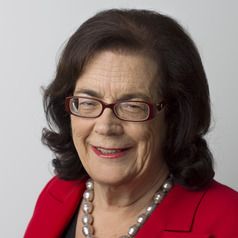The government has announced relief measures, including a $50 million program for regional journalism, to help media hit by the fallout from COVID-19 crisis.
Commercial television and radio broadcasters will be given a year’s waver of spectrum tax, at a cost of $41 million.
There will also be an “emergency” suspension of content quotas in 2020, which could extend longer.
Announcing the measures, Communications Minister Paul Fletcher said the media were sharing the pain of the virus crisis and the government was responding with short term support.
The virus crisis has seen drastic cutbacks in regional media as advertising has collapsed.
This week Australian Community Media announced it would “temporarily cease some of our publications and temporarily close our printing sites in Canberra, Murray Bridge, Wodonga and Tamworth from April 20 until June 29”. The publications hit are non-dailies.
Last month, the Barrier Daily Truth, in Broken Hill, and the Sunraysia Daily, at Mildura, suspended printing. The ABC on Wednesday reported both “are inching towards resurrection, helped by enormous community support”.
Fletcher said the $50 million Public Interest News Gathering Program (PING) would support public interest journalism delivered by commercial TV, radio and newspaper businesses in the regions. It includes $13.4 million new money as well as repurposed funds from the government’s Regional and Small Publishers Jobs and Innovation Package.
Fletcher said the coronavirus had effectively halted production of Australian screen content, so free-to-air and subscription TV could not meet their Australian content requirements.
“As an emergency red tape reduction measure, I have suspended Australian drama, children’s and documentary content obligations on free-to-air and subscription television for 2020. A decision will be taken before the end of this year as to whether this suspension should continue in 2021,” he said.
“It remains critically important that we have Australian voices on Australian TV, so there will be no change to the requirement for broadcasters to meet an overall 55% Australian content obligation”.
Fletcher said the government meanwhile was speeding up work on the future extent of Australian content obligations on free-to-air television, and whether these should apply to streaming services.
“This work is critical to the future of the culturally and economically important Australian film and television production sector,” he said.
To guide discussions, Fletcher released an options paper from Screen Australia and the Australian Communications and Media Authority (ACMA). Consultation with stakeholders, including ministerial roundtables, will take place over the coming two months.
“Regulated free-to-air broadcasters are competing with unregulated digital platforms and video streaming services. It has been evident for some time - and the COVID-19 crisis has made it even more obvious - that this is not sustainable,” Fletcher said.
“These arrangements threaten the sustainability of television broadcasters - and in turn the sustainability of the film and television content production sector.
"That is why I want to seek industry feedback on the options put forward by ACMA and Screen Australia, and work with industry on a plan for the future, including how to best secure the market opportunity created by the explosion of streaming services”, he said.
The Media, Entertainment & Arts Alliance (MEAA) welcomed the government’s assistance for regional media and called on Australian Community Media to “press pause on plans to close publications”.



 Volaris and Viva Agree to Merge, Creating Mexico’s Largest Low-Cost Airline Group
Volaris and Viva Agree to Merge, Creating Mexico’s Largest Low-Cost Airline Group  Sanofi’s Efdoralprin Alfa Gains EMA Orphan Status for Rare Lung Disease
Sanofi’s Efdoralprin Alfa Gains EMA Orphan Status for Rare Lung Disease  Oracle Stock Slides After Blue Owl Exit Report, Company Says Michigan Data Center Talks Remain on Track
Oracle Stock Slides After Blue Owl Exit Report, Company Says Michigan Data Center Talks Remain on Track  OpenAI Explores Massive Funding Round at $750 Billion Valuation
OpenAI Explores Massive Funding Round at $750 Billion Valuation  Apple Opens iPhone to Alternative App Stores in Japan Under New Competition Law
Apple Opens iPhone to Alternative App Stores in Japan Under New Competition Law  Trump Administration Reviews Nvidia H200 Chip Sales to China, Marking Major Shift in U.S. AI Export Policy
Trump Administration Reviews Nvidia H200 Chip Sales to China, Marking Major Shift in U.S. AI Export Policy  Robinhood Expands Sports Event Contracts With Player Performance Wagers
Robinhood Expands Sports Event Contracts With Player Performance Wagers  Apple Explores India for iPhone Chip Assembly as Manufacturing Push Accelerates
Apple Explores India for iPhone Chip Assembly as Manufacturing Push Accelerates  FedEx Beats Q2 Earnings Expectations, Raises Full-Year Outlook Despite Stock Dip
FedEx Beats Q2 Earnings Expectations, Raises Full-Year Outlook Despite Stock Dip  Nike Shares Slide as Margins Fall Again Amid China Slump and Costly Turnaround
Nike Shares Slide as Margins Fall Again Amid China Slump and Costly Turnaround  Maersk Vessel Successfully Transits Red Sea After Nearly Two Years Amid Ongoing Security Concerns
Maersk Vessel Successfully Transits Red Sea After Nearly Two Years Amid Ongoing Security Concerns  Citi Appoints Ryan Ellis as Head of Markets Sales for Australia and New Zealand
Citi Appoints Ryan Ellis as Head of Markets Sales for Australia and New Zealand  Elliott Management Takes $1 Billion Stake in Lululemon, Pushes for Leadership Change
Elliott Management Takes $1 Billion Stake in Lululemon, Pushes for Leadership Change  ANZ New CEO Forgoes Bonus After Shareholders Reject Executive Pay Report
ANZ New CEO Forgoes Bonus After Shareholders Reject Executive Pay Report  Harris Associates Open to Revised Paramount Skydance Bid for Warner Bros Discovery
Harris Associates Open to Revised Paramount Skydance Bid for Warner Bros Discovery  Amazon in Talks to Invest $10 Billion in OpenAI as AI Firm Eyes $1 Trillion IPO Valuation
Amazon in Talks to Invest $10 Billion in OpenAI as AI Firm Eyes $1 Trillion IPO Valuation  Delta Air Lines President Glen Hauenstein to Retire, Leaving Legacy of Premium Strategy
Delta Air Lines President Glen Hauenstein to Retire, Leaving Legacy of Premium Strategy 































